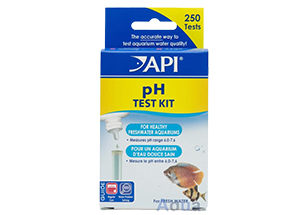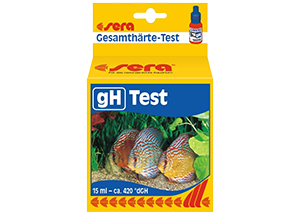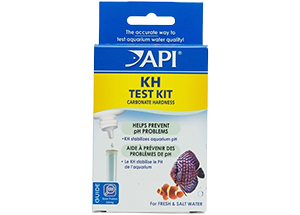When you enter the world of aquariums, you’re introduced to pH, GH, and KH– three important friends for happy fish tanks.
Think of pH as their mood indicator, GH as the provider of minerals, and KH as the peacekeeper. Together, they create a comfortable underwater environment.
Let’s dive in together to uncover the importance of pH, GH, and KH to discover how these factors can contribute to a thriving aquarium.
Disclosure: This article contains affiliate links. When you follow a link to purchase the products, I sometimes earn a commission, at no additional cost to you. Read my full disclosure here.
A Brief Overview of pH, GH, and KH
So, before we take you through the depth of pH, GH and KH, we thought of give you a quick overview so you are able to differentiate between the three.
- pH – The Acidity-Alkalinity of Substance
The pH determines whether the water is acidic or alkaline. There is always an emphasis to maintain stable pH because fluctuations in it can lead to cause stress among fishes. To create an optimal environment for your fish, it’s recommended to research their specific preferences regarding pH levels. - KH – Carbonate Hardness: Your pH Stabilizer
Aquarium KH, also known as carbonate hardness, acts as a pH stabilizer for your aquarium. It measures the bicarbonate and carbonate ions in the water to ensure that there are no sudden shifts in the pH levels that could harm your fish. - GH – Aquarium General Hardness: A Fountain of Essential Minerals
GH, or aquarium general hardness, measures calcium carbonate and magnesium ions. The GH levels in a freshwater aquarium are essential for their overall well-being and proper growth.

Quick view on Amazon
Available in: Australia, Canada, UK and US
1. pH
pH, which stands for the power of hydrogen, is used to measure the concentration of hydrogen ions in aquariums. It is a logarithmic scale where each pH value represents a tenfold increase or decrease in acidity compared to the next value.
Ideal pH and Its Importance in Fish Tanks
Freshwater fish generally do well in pH levels that range from 6.5 to 8.0. Certain types of fish, such as those native to South America and Caridina crystal shrimp, prefer slightly lower pH levels.
On the other hand, African cichlids and livebearers thrive better in higher pH conditions. While maintaining a specific pH is not essential for casual fishkeeping, it becomes crucial when it comes to breeding specific species and successfully raising their fry (baby fish).
How to Measure pH? Controlling & Monitoring Methods
Make it a habit to frequently monitor the pH levels in your aquarium as it is incredibly important for both breeding fish and detecting any potential health problems.
- Chemical Buffers: Chemical buffers allow for direct adjustment of acidity or alkalinity by using chemical additives.
- Biological Buffers: In contrast, biological buffers involve the introduction of beneficial bacteria to aid in pH regulation. These bacteria can be added during tank setup through live rock or substrate.
- Natural Buffers: Another option is utilizing natural buffers, which typically involves the use of materials like peat soil, leaf litter, or bogwood. These substances gradually release tannins and help stabilize pH levels over time.
- Testing Kits: Regularly monitor key parameters such as pH and nitrate levels using testing kits, dip tests, or digital systems.
How to Lower pH in aquarium?
Taking care of a freshwater aquarium requires maintaining pH stability, which can sometimes be challenging.
Therefore, if you are wondering how to lower ph in aquarium, one way is by using peat moss, driftwood, and almond leaves. Alternatively, reverse osmosis units and CO2 reactors can also be used if you are seeking methods for how to lower pH in aquarium.
Effects of Lower pH
- Blue-Green Algae: This algae thrives in acidic surroundings, suffocating the tank and depleting oxygen levels, which can result in fish deaths.
- Subpar Water Quality: Its fine if you are searching for how to lower pH in aquarium but extremely low-level hampers water conditions and negatively impacts the growth.
- Impaired Growth and Increased Disease Risk: Unfavorable pH levels may hinder the proper development of fish, leading to stunted growth and a heightened vulnerability to diseases.
- Aggression and Territorial Behavior: Lower pH values induce stress among fish, triggering aggressive attitudes.
Effects of Higher pH
- Algal Overgrowth: Excess carbonate ions and higher pH levels can lead to the rapid growth and domination of brown algae, creating an imbalance in the tank environment.
- Nutrient Deficiency: When pH levels are elevated, essential nutrients for fish and plants become less available, hindering their growth potential and potentially causing harm or death.
- Ammonia Accumulation: In a high-pH environment, beneficial bacteria struggle to break down ammonia effectively, leading to its buildup which can be toxic to aquatic life.
- Increased Stress and Disease Susceptibility: Fish experience heightened stress when exposed to high pH conditions, making them more vulnerable to contracting diseases that may further compromise their well-being.

Quick view on Amazon
Available in: Australia, Canada, UK and US
2. GH
The aquarium general hardness (GH) is the concentration of Ca and Mg in water.These elements play an important role in maintaining strength of fish’s bone, osmoregulation, and fertilization.
Importance of Ideal GH Level in Freshwater Aquarium
Aquarium general hardness like KH, is measured in terms of dGH and ppm. The recommended range for GH is 4-8 dGH (70-140 ppm).
Fish such as livebearers, goldfish, and African cichlids tend to prefer a higher gh level in freshwater aquarium. On the other hand, if you are breeding soft water fish, it might be necessary to reduce the aquarium general hardness to a level as low as 3 dGH (50 ppm) or even lower.
How to Measure GH?
Use testing strips to control aquarium general hardness (GH) for desired levels or health issues.
Indications of low GH level in freshwater aquarium include fish that refuse food, stunted growth, laziness, dull colors, plants showing signs of mineral deficiency, shrimps struggling to molt properly, and snails with shell problems.
The increased aquarium general hardness (GH) indicates an excess of magnesium, particularly. To identify specific mineral deficiencies in freshwater tanks, employ a calcium test kit.
3. KH

Quick view on Amazon
Available in: Australia, Canada, UK and US
Aquarium KH is a way to measure carbonates and bicarbonates in water, which is important for maintaining the balance between acidity and alkalinity.
Having an appropriate aquarium KH level plays a crucial role in ensuring the good health of fish by preventing sudden changes in pH.
Lowering KH in aquarium can lead to significant fluctuations in pH levels, while a high aquarium level helps to resist such adjustments. In simple terms, having higher aquarium KH acts like having a bigger buffer “trash can” that helps prevent drastic drops in pH levels.
One effective way to boost the aquarium KH level is by adding crushed coral into the water.
Ideal KH and Its Importance in Fish Tank
The aquarium KH levels can differ depending on the setup and personal preferences. It is generally recommended to maintain a KH level between 30-60 ppm, which is suitable for most freshwater organisms.
However, there are exceptions to this guideline; African cichlids prefer higher levels of around 80-100 ppm while lowering KH in aquarium upto 20-30 ppm will make perfect environment for livebearers.
The aquarium KH value plays a crucial role in pH stability as a higher KH leads to a more consistent pH. Therefore, it’s important for lowering KH level in aquarium according to the specific needs of your tank’s inhabitants.
How to Measure KH?
If you’re looking for a hassle-free way to measure aquarium KH during your regular water changes, we suggest using the easy-to-use multi-test strips.
It’s crucial to keep an eye when lowering KH in aquarium to prevent drastic fluctuations. If you need to stabilize the pH, raising the KH can help achieve that goal.
Meanwhile, if you want to reduce the pH, lowering KH in aquarium could be beneficial.
The Relation between Aquarium pH, GH and KH
The measurement of pH, GH and KH is used to determine specific ions present in water. When natural mineral sources are released into the water, they introduce a variety of different ions that can impact various parameters of the water.
If you want to increase GH without impacting KH, then it’s important to focus on calcium and magnesium ions. The KH level helps moderate changes in pH; having a higher KH level stabilizes the pH. On the other hand, raising the KH level will also raise the pH
The Effect of High Aquarium KH and GH levels in Freshwater Aqaurium
- When the pH levels are elevated, it can be harmful to freshwater fish and plants due to high KH.
- Excessive GH leads to unattractive deposits on tank surfaces that are difficult to remove.
- Freshwater fish often experience stress, swim bladder problems, reproductive issues, and weakened immune systems.
- High levels of GH and KH can cause cloudy water, hinder plant growth, and result in abnormal behavior among the fish.
The Effect of Low Aquarium KH and GH levels in Freshwater Aqaurium
- Fish such as cichlids and livebearers experience growth impairment and a weakened immune system when they lack sufficient GH.
- Irregular levels of GH can cause deformities in fish, making them more prone to diseases like fin rot and ich or white spot disease.
- Lowering KH in aquarium can led to sudden drop in pH which can be harmful to freshwater fish, causing stress or even death.
- The growth of plants is hindered by lowering KH in aquarium, leading to stunted growth and yellow leaves.
Preventing Excessive KH and GH Levels in Freshwater Aquarium
- Careful Management of Fish Population: Take care to not overcrowd or overfeed your fish, as this can lead to imbalanced mineral levels.
- Mindful Use of Buffers and Supplements: Reduce the usage of alkaline buffers, limestone substrates, and calcium/magnesium supplements.
- Regular Water Changes: Dilute excessive minerals by regularly changing the water in your aquarium.
- Consider Using RO or RO/DI Water: Install a reverse osmosis or reverse osmosis/deionization (RO/DI) system to decrease the mineral content in tap water before adding it to your tank.
- Conduct Pre-Testing on Water Quality: It is advisable to test the quality of tap water even if you are using an RO/DI filter.
Conclusion
It is extremely important to maintain a balanced chemistry in your aquarium. The pH, GH and KH levels are all interconnected and can be affected by the minerals present. Thus, make sure you test them regularly for the well-being of your fish.



